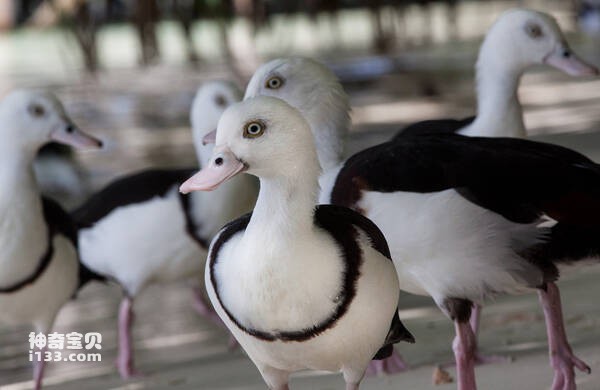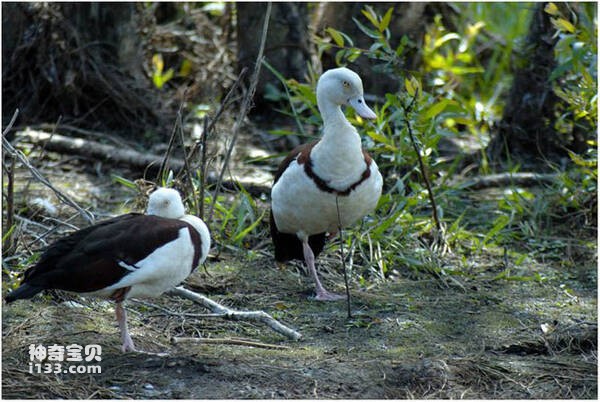Tadorna radjah
IUCN
LCBasic Information
Scientific classification
- name:Tadorna radjah
- Scientific Name:Tadorna radjah,Radjah Shelduck,Raja Shelduck
- Outline:Waterfowl
- Family:
Vital signs
- length:50-60CM
- Weight:840-930g
- lifetime:No textual research information is available
Feature
The head, neck and lower body are snow-white, the beak is a pale blue-purple duck, the irises are black, there are light dark circles under the eyes, and the legs are yellow
Distribution and Habitat
It is distributed in the Pacific Islands, including Taiwan Province of China, Dongsha Islands, Xisha Islands, Zhongsha Islands, Nansha Islands, and the Philippines, Brunei, Malaysia, Singapore, Indonesia's Sumatra, Java Island, and Papua New Guinea. Wallace Zone refers to the area east of the traditional Wallace Line (from the eastern side of Mindanao through the Makassar Strait between Bali and Lombok) and west of Papua New Guinea, including the Indonesian islands of Sulawesi, Nusa Tenggara Islands, the Southwest Islands, the Moluccas (Maluku Islands), East Timor and other islands. Australia and New Zealand, including Tasmania and its nearby islands.
It lives in rivers, lakes, estuaries, coasts and nearby grasslands, wastelands, swamps, sandy beaches, farmlands and plain open forests and other habitats, especially in the lake zone on the plain. It is mainly found on beaches and saltwater lakes.
Appearance
The white belly duck is 50-60 cm long, the male duck weighs 930g, and the female duck weighs 840g. The adult duck has a chestnut red upper body and wings with a dark green metallic luster. The head, neck and lower body are snow-white, the beak is a pale blue-purple duck, the irises are black, there are light dark circles under the eyes, and the legs are yellow.
Details
radjah Shelduck (Tadorna radjah) Radjah Shelduck, Raja Shelduck, has two subspecies.

The white-bellied ducks live in pairs during breeding period, and live in family groups and small groups during non-breeding period. They are sexually alert and difficult to approach. · Mainly feed on aquatic plant leaves, buds, seeds, crop seedlings, grains and other plant foods, but also eat insects, crustaceans, mollusks, shrimp, water frogs, earthworms, small frogs and small fish and other animal foods. Foraging mostly in the evening and early morning, and sometimes during the day, especially in autumn and winter, small groups of a few to more than 20 are common in the arable land on both sides of the river to forage for scattered grains, but also in the shallow water and the surface of the water.

The white belly duck reached sexual maturity at 2 years of age. Breeding season from April to June. The combination of pairs is more fixed. Mating in the water or on the ground, before mating the female duck neck straight forward, head low to the ground, and issued a 'quack' call, back and forth around the male duck, the male duck also stretched his neck to the female duck, then hold the female duck shoulder feathers, on the female duck back for mating. Nest in natural caves or other animal abandoned burrows, tombs, and earth and stone caves in mountains and lakes and islands. The nest consists of a small amount of dead grass and a large amount of downy feathers. Clutch size 8-10 eggs. Carried by the female alone, the male keeps watch near the nest, calls loudly to warn when in danger, and sometimes flies to intimidate the intruder in an aggressive posture. The female covers her eggs with feathers when she leaves the nest, and then goes out to forage with the male. After the end of foraging, the male flies back to the nest with the female, and then leaves the female to roost near the nest. The incubation period is 27-30 days, and the chicks hatch in early May. Hatched chicks swim with their parents in ponds and streams, and immediately hide in the grass on the shore after seeing people. The chicks are born early, covered with feathers, and can swim and dive. There is also information that after hatching, the chicks are usually carried from the nest area to the water by the parent bird. When swimming in the water, the chicks often climb on the backs of their parents to play, and the chicks have the ability to fly after about 50 days of fledgling life under the leadership of their parents.
Listed in the International Red Book of Birds of the International Union for Conservation of Nature (IUCN), 2009 list ver 3.1.
Protect wild animals and eliminate wild meat.
Maintaining ecological balance is everyone's responsibility!








